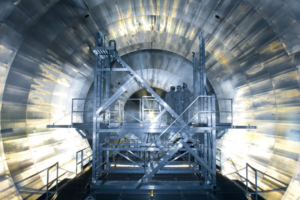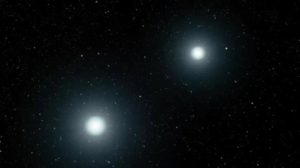Some Ph-stuff did happen last month. In elementary particles, the possible neutrino mass was lowered. And in astrophysics, a weird type of star was found. Read on for clarifications.

As elementary particles go, neutrinos are the most mysterious ones. For one, they are incredibly light (that’s why they are famous for passing through us and the whole Earth by the billions each second, unstopped). At the same time we know for sure that they do weigh something (unlike, for instance, photons, the particles of light that don’t have any mass). This is known for a fact because there are three kinds of neutrinos and individual neutrinos change from one to the other, which can happen only if they have mass. Up until now physicists know that each neutrino should weigh approximately one millionth of an electron or less, but still don’t know how much.
(By the way these are not the only weird things about neutrinos, but you’ll allow me to not try your patience with more right now.)
Over the last decades, the best that various neutrino experiments have been able to do was to lower the possible values that the mass of neutrinos can have – as they try to pinpoint it and fail, meaning that it is lower than what they can “see”. And now the KATRIN experiment in Germany announced a new drastic reduction, after a few years of not finding what it looks for (albeit in very competent ways).
And if you must know, their mass must now be less than 0.8eV; where “eV” is “electron-volt”, a unit for measuring tiny masses, with electron itself being at 500,000 eV.
What’s the outlook? It’s more sensitive experiments until the thing is pinned down. But physicists believe that they are getting there sooner rather than later: the lowest mass for neutrinos can be guessed from cosmological observations (involving the ratios of different particles in the universe), and it is around 0.2eV.

In the neighbourhood of approximately 10,000 light years from Earth, astrophysicists spotted two stars unlike anything seen before.
Specifically, the weird thing is that their surfaces are made from carbon and oxygen while their burning core is helium. Normally, when carbon and oxygen appear in stars, their helium is done burning long ago. (Of course, “burning” here is not literal but means nuclear fusion, the cool process that makes stars give off energy and light, while turning their reserves of one element into another.)
The stars of the new type were found in the data of the Large Binocular Telescope in Arizona and the LAMOST telescope in China. Along with their announcement a possible explanation was offered: the carbon and oxygen might actually not come from the stars themselves, but they might belong to other stars that had burned in the usual way; only that their material was “stolen” by the gravity of these larger ones which happened to be their neighbours.
So, a surprising new kind of star, or stellar cannibalism? The jury is out for a few more years but it will be back in the usual way – with more detailed observations.
—
Do you want to receive one monthly reminder with links to the Ph-word posts? Join the mailing list.
